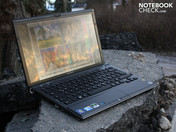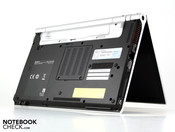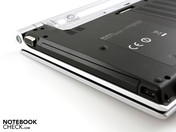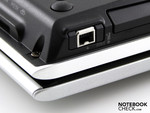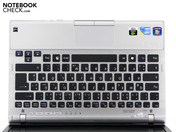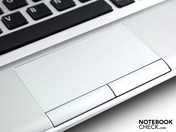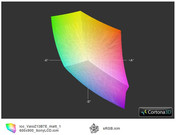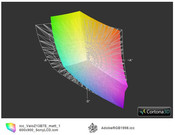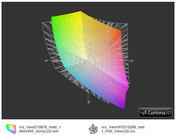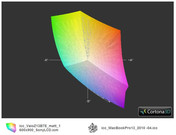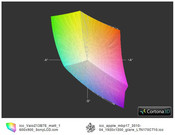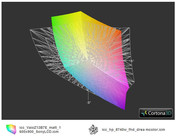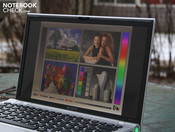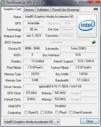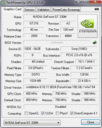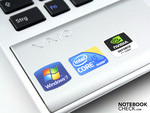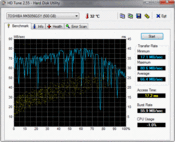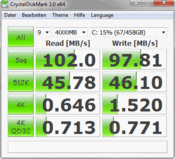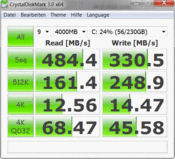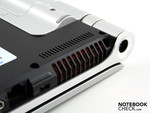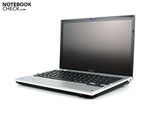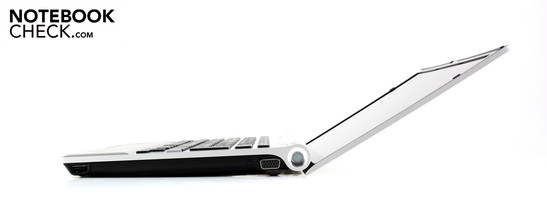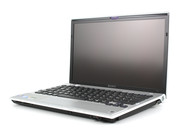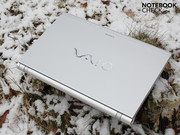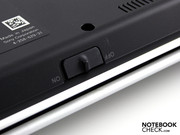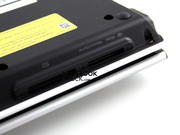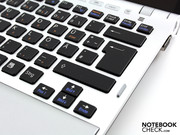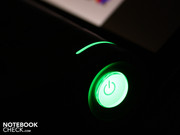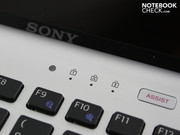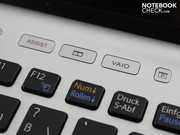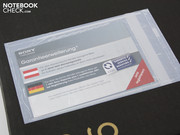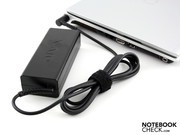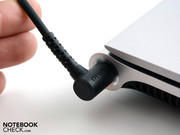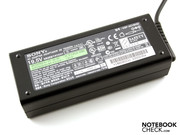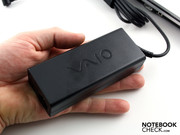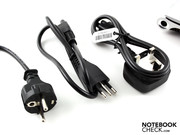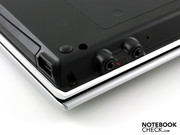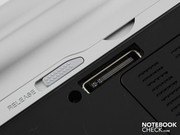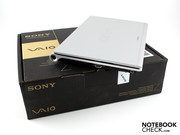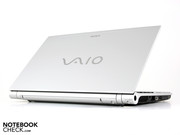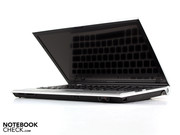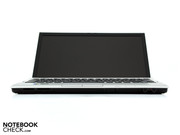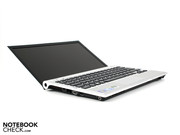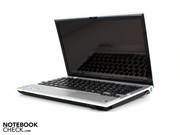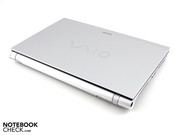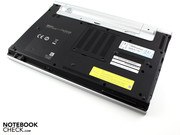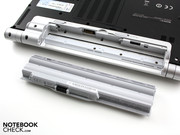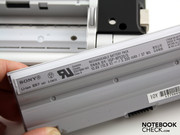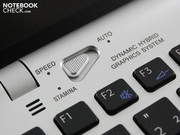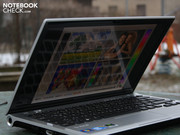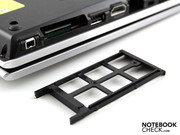Review Sony Vaio VPC-Z13B7E subnotebook

The Vaio Z-series appears to want to be a never ending story. After the current full-HD + Quad-SSD configuration (VPCZ13Z9E/X) at a price of 3299 Euros only just visited us in January 2011, another Z13 is already back on our desk. This time it is silver and comes at a retail price of 1399 Euros.
The 'low-budget' version with the name VPC-Z13B7E/S is technically trimmed down, since neither a Core i7 nor a SSD are under the hood. Even the optical drive is no longer present. The resolution has shrunk down to 1600 x 900 pixels (WSXGA+), but is still not reflective.
Is the VPC-Z13B7E/S suitable for everyone for working, who cannot afford anything in the Z-series above 2000 Euros? What level of quality does the WSXGA+ display have? Can it keep up with the best aspects of the full-HD display (VPCZ13Z9E/X) with respect to colors, luminance, and viewing angles? How much of an impact have the performance results incurred, if 'only' a Core i5-460M and a normal hard drive are included? All of the answers to these questions can be found in this review.
Case
Cheaper = due to lower quality? To an extent. The tested Z13B7E/S has inherited the good characteristics of its predecessors and sister models Vaio Z12 and Z13Z9E/X. Not considering the color, the chassis is the same. The carbon fiber plastic and aluminum construction is still just as light and qualitative. Although it can take away from the rigidity of the base units from its sister models.
The reason for the better rigidity is the missing optical drive. In its place there is now simply a plastic panel. From a construction perspective this only leaves the right palm resting area and the base plate for criticism, since these allow noticeable bending in some places.
Connectivity
The interfaces are located on the right, left, or at the front. The absence of the DVD or Blu-Ray drive unfortunately doesn't provide for a more generous spacing of the ports. Where four USB sockets and an eSATA interface would have enough room, there is only a panel cover to be found where the optical drive used to reside.
The VGA interface sits on the right at the back next to the power switch. A good position, which prevents a lack of space due to bulky VGA cables to a large extent. Contrary to the expensive sister models there is once again a FireWire (i.LINK) port included. In turn one USB 2.0 port has had to be sacrificed. Via the ExpressCard34 slot extensions such as a USB 3.0 controller can once again be added.
Communication
The Ethernet connection via a cable can transfer data according to the Gigabit standard (Intel 82577LC). Also when it comes to the WLAN, the fastest standard AGN in on board Intel Advanced-N 6200). Contrary to the sister model VPC-Z13Z9E/X there is NO 3G-module for mobile internet access included.
Security
The fingerprint reader on the VPC-Z13Z9E/X is not included.
Accessories
There are no media included; merely a quick-start, recovery, and service manuals. A recovery DVD for securing Windows Professional 64-bit has to be burned by the user themselves (Vaio Assist). Sony offers a docking solution for the Z13/Z12/Z11 models. The Vaio VGP-PRZ10 docks to the bottom surface of the 13.1 inch subnotebook, and duplicates the following interfaces: 3x USB, 1x GB LAN (RJ-45), 1x 15-pin D-Sub VGA, 1x DVI-D. The price: from 175 Euros.
Warranty
Sony provides a 24 month return warranty for the Z13. This consists of 1 year basic warranty, with 1 additional year of warranty. Depending on the location of purchase, customers should inquire regarding the details, and possibly claim the 24 months by registering the product. The purchase of an 1 year warranty extension (PCGE-VPW1, 99 Euros), or 2 year warranty extension (PCGE-VPW2, 179 Euros).
Input Devices
Keyboard
The separated arrow keys have a large gap between each other, and offer a very clear pressure point, as well as a medium key travel. The key end stop is hard, since the surface only gives way a little in one area. The entry can be recommended for regular typers, although they will have to get used to the Vaio typical short stroked typing feeling. The keys are less grippy than the more expensive Z13, since these are no longer adorned with rubber.
Furthermore positive: The separated arrow keys and the large enter and shift keys. We were able to reach these without looking, and rarely missed our target. To the benefit of the key size Sony has omitted an alpha-numeric keypad. Alpha-numeric keypad users can use the marked block of letter keys by activating the Num key (next to F12).
Touchpad
The mouse replacement works precisely when we glide across the matte surface. This is sensitive right up to its edges. The touchpad cannot be disabled with the Fn button. The multi-touchpad (Synaptics V7.4) recognizes the use of two fingers. Thanks to this two finger gestures are possible (zoom, scroll, turning pages). The mouse buttons are a little difficult to operate since they only have a short travel. In return they click relatively quietly.
Display
The display on the subnotebook is still a bright light of the features, even if it is no longer has full-HD resolution. The description WSXGA+ non-glare stands for a resolution of 1600 x 900 pixels, which is a high resolution for a 13.1 inch device. The display panel is non-reflective, although it does give some reflections.
The 'SonyLCD' marked panel offers a high contrast level of 823:1. This provides for sharp and crisp bright colors. In this respect it is along the same lines as the FHD panel on the expensive Z13Z9E/X. The color space, for which we created an ICC profile, is very good, but doesn't quite cover the same amount of spectrum as the FHD-TFTs. The ICC graphics show the tested device (color) compared to the image editing usual sRGB and AdobeRGB (transparent). The FHD panel (picture three) has the larger color space, since this even covers the AdobeRGB.
The comparison with further professional panels shows the SonyLCD as a contender, but not as perfect; for example the Dreamcolor panel in the HP workstation EliteBook 8740w.
| |||||||||||||||||||||||||
Brightness Distribution: 91 %
Center on Battery: 329 cd/m²
Contrast: 823:1 (Black: 0.4 cd/m²)78.6% AdobeRGB 1998 (Argyll 2.2.0 3D)
99.7% sRGB (Argyll 2.2.0 3D)
83.1% Display P3 (Argyll 2.2.0 3D)
The Z13 combines two characteristics that a mobile device needs perfectly: This includes a perfectly bright illumination of the display panel with 326 cd/m², along with a non-reflective display. In some places the panel even reaches 340 cd/m². With this the VaioLCD is about 100 cd/m² brighter than the full-HD panel on its sister model.
The illumination can be described as very homogeneous at 91%. The brightness of the panel is automatically adjusted with the aid of an ambient light sensor. Depending on the brightness of the surroundings, the brightness of the display re-adjusts to compensate. Under direct sunlight the luminance increases to its maximum thanks to the sensor. For our measurements and outdoor photographs we disabled the ambient light sensor (Vaio Control Center).
Under daylight the Z13 offers a perfect view of the desktop. The use under direct sunlight could unfortunately only be tested on a cloudy winters day. The semi-non-reflective surface is sufficient under these lighting conditions, to suppress reflections to a great extent. The SonyLCD works like a glare-panel, which has been covered in a fine matte foil. The reflections of the surrounding light are not completely suppressed from some angles, but are then only diffused and hardly have any negative impact. The advantage compared to 'normal' matte displays is the preservation of the glossy color effect.
The horizontal viewing angles have been a great success. There is no color distortion (false images), regardless of how far the eyes fray to the left or right (90 degrees). The TFT does darken though. Vertically our eyes can only deviate by 15 degrees upwards or downwards. After this the colors invert clearly. The viewing angles are identical to the FHD display panel.
Performance
Sony has fitted the VPC-Z13B7E/S with an Intel Core i5-460M. A Intel HD graphics card, as well as a memory controller for DDR3-800/1066 are already on board this Arrandale CPU. The processor has two physical cores with 2.53 GHz each, and is manufactured with the 32nm lithography process. The speed of the 460M deviates with the Turbo-Boost between 2.53 and 2.8 GHz. The technology allows the dynamic overclocking of one or both of the processor cores.
In addition to this comes the Hyper-Threading, which provides two additional virtual cores to assist. Applications can thus calculate with up to four threads. 4.096 GB of DDR3 RAM is furthermore a typical accessory to Windows PCs. The RAM sits on two modules (2x 2 GB), and can easily be changed via a maintenance panel.
Our Vaio Z13B with its i5-460M can keep up with its counterparts as could be expected: The processor test Cinebench R11.5 (64-bit) gives our tested system a score of 2.23 points. 520M CPUs also lie at around 2.2 points (same standard clock speed). A 430M comes to 2.0 points, a i3-330M only scores 1.75 points. The i5-460M is only 13 percent slower than the Core i7-640M (2.4 points) in the Z13Z9E/X.
When it comes to single core calculations (Cinebench R10 single 32-bit) the 460M lags behind the i7-640M by about 17 percent less processing performance. This leads to scores 3.075 points versus 3.675 points. The cause of this is the higher standard standard clock speed (2.8 GHz) and the Turbo overclocked clock speed (3.45 GHz) of the i7-640M.
| PCMark 05 Standard | 6880 points | |
| PCMark Vantage Result | 5855 points | |
Help | ||
The PCMark Vantage benchmark calculated a score of 5.855 points (SPEED mode: GeForce GT 330M active). This score visualizes the application speed. With this score the Z13B7E/S misses the best value in the SSD class (VPC-Z13Z9E/X, 10.087 points) by a far stretch. Nevertheless we are still not dealing with a lame duck. The PCMark Vantage score still lies in the neighborhood with powerful notebooks, such as the Apple MacBook Pro 17 inch 2010-04 (540M, GT 330M), or the Acer Aspire 8943G (720QM, HD 5850).
| 3DMark 06 Standard Score | 5414 points | |
| 3DMark Vantage P Result | 2159 points | |
Help | ||
The 500 GByte HDD (Toshiba MK5056GSY) is hardly a bottleneck with a rotational speed of 7200 rpm. According to HD-Tune it may only read at a rate of 66 MByte/s in sequential read. But Crystal DiskMark measures a very good 102 MByte/s for simple reading (test always measures higher than HD-Tune). For a 2.5 inch hard drive the HDD score of 3.802 points is above average.
The rotating drive cannot keep up with SSDs though, especially not with the Quad-SSD (RAID 0) in the luxury liner VPC-Z13Z9E/X. We have put the Crystal DiskMark results for this next to those from the HDD for the sake of comparison. The SSD scores an HDD-score of 17.406 points.
As a dedicated graphics card the familiar outdated Nvidia GeForce GT 330M with 1024 MB of DDR3 memory is included. The processor operates with a clock speed of only 450 MHz, the memory with 700 MHz. Sony does not utilize the possible clock speed, typically this would be 575 / 790 MHz. Thus the mid-range Nvidia GT 330M (3xx-series) works slower than the ATI mid-range, such as the HD 6550M or the HD 5650.
The 3DMark2006 benchmark finishes with a score of 5.414 points. Usually a GT 330M can achieve more than 6.000 without difficulties in this test. The Vaio Z12 with a similarly powerful 520M processor reaches 5.569 points (core 475 MHz). With this the Z13B7E/S lies on a par with its SSD sister Z13Z9E/X (5.500 points), but clearly a notch lower than the Mobility Radeon HD 5650, which can score between 6.500 and 7.000 points depending on the CPU performance.
StarCraft 2
The strategy game requires a fast multi-core processor for medium and high resolutions (control and KI of many small units). This is provided for with the i5-460M. But when the GPU performance stays below that of an HD 5650 high details remain a matter of wishful thinking. StarCraft 2 is only playable with reduced details (medium) and medium resolution (1360 x 768) with 32 fps. Using high details the Z13 only gives an unplayable 22 fps.
| StarCraft 2 | |||
| Resolution | Settings | Value | |
| 1360x768 | high | 22 fps | |
| 1360x768 | medium | 31.7 fps | |
| 1024x768 | low | 153 fps | |
Gaming Verdict
The GT 330M is already a bit on the slow side with a a normal clock speed of 575 / 790 MHz. In its tested version with 450 / 700 MHz it was robbed of its edge however. Of course the performance is still potent for the subnotebook class, and most games can be played with medium detail settings. But Acer has shown how good mid-range 3D performance can work in a subnotebook with the Aspire TimelineX 3820TG (AMD Radeon HD 6550M).
| low | med. | high | ultra | |
| StarCraft 2 (2010) | 153 | 31.7 | 22 |
Emissions
System Noise
Surfing the web, typing emails, or updating Excel spreadsheets; these easy tasks hardly strain the Z13 and thus take place with the cooling fan on its lowest speed. This does however lie at a minimum of 33.1 dB(A). This goes for the Speed-Mode with active GT 330M, and for the Stamina-Mode with Intel HD as well.
While the cooling fan speed varies a little during office use, some noise stays constantly audible, from the 7200 rpm hard drive from Toshiba. The constant humming is a negative aspect of fast hard drives, as we have already often had to experience with notebooks. The HDD only transfers its vibrations to the immediately above itself palm resting area. It soon becomes clear why an SSD is the best choice for a small and light subnotebook.
During high CPU load the cooling fan turns up to 48.8 dB(A). This can no longer be overheard. This volume was reached with Prime95, which uses all the threads available with the i5-460M. When a constant load (Furmark) simultaneously also strains the GT 330M graphics, then the cooling fan becomes hysterically loud with 53.8 dB(A). A sound scape such as this, which already almost sounds like a small rocket taking off, is however only reached in practically unlikely stress test. The fact is: Even short bursts of CPU load make the cooling fan quickly turn up to 38 to 45 dB(A).
Noise Level
| Idle |
| 33.1 / 33.4 / 34.3 dB(A) |
| HDD |
| 33.6 dB(A) |
| Load |
| 41.2 / 53.8 dB(A) |
 | ||
30 dB silent 40 dB(A) audible 50 dB(A) loud |
||
min: | ||
Temperature
At least the noisy cooling fan provides for a cool chassis. During maximum load only a single point on the air vent becomes just about 40 degrees warm. During idle use the temperature is low on the surfaces. The average heat dissipated on the top surface lies at only 21 degrees. The base plate makes a similarly perfect impression with 22 degrees (average).
Under a high load over several hours the average temperatures only rise modestly. 24 and 25 degrees are the average values for the top and bottom sides. These are considerably low high load temperatures for a subnotebook with a Core i5 standard CPU and a dedicated graphics card. How far the Prime95 stress test can drive these temperatures up is shown by the temperature sensors. The processor temperature was supposedly 96 degrees on the CPU (stress test). The GPU heated up to a maximum of 82 degrees.
(+) The maximum temperature on the upper side is 28.8 °C / 84 F, compared to the average of 35.9 °C / 97 F, ranging from 21.4 to 59 °C for the class Subnotebook.
(±) The bottom heats up to a maximum of 40.4 °C / 105 F, compared to the average of 39.4 °C / 103 F
(+) In idle usage, the average temperature for the upper side is 20.6 °C / 69 F, compared to the device average of 30.7 °C / 87 F.
(+) The palmrests and touchpad are cooler than skin temperature with a maximum of 21 °C / 69.8 F and are therefore cool to the touch.
(+) The average temperature of the palmrest area of similar devices was 28.3 °C / 82.9 F (+7.3 °C / 13.1 F).
Speakers
The stereo speakers located above the keyboard deliver a high pitched audio spectrum. The volume also doesn't manage to get very loud. At least the speakers don't distort at maximum volume though. The audio outputs and inputs at the front worked perfectly and didn't show any noise in our test with two Yamaha speakers (YST-M20SDP).
Battery Life
This 13.1 inch subnotebook is equipped with a 57 watt-hours battery (5200 mAh). This keeps the Z13 on its feet for exactly five hours (302 minutes) while surfing the web (over WLAN). The battery life was measured by us in the Stamina-mode (Intel HD) with about 100 cd/m² of brightness. With the brightness tweaked down and purely office use the Vaio Z13 can stay operational for significantly longer. This is shown by the Reader-Test with a result of 509 minutes (reading text with minimum brightness; 8.29 hours).
A movie from a DVD could not be watched due to the lack of an optical drive. An AVI movie on the hard drive with a low resolution runs for four and a half hours (268 minutes). The next movie session can't be started until after a long 3.31 hours (100% battery charge).
Compared to its expensive SSD sister model VPC-Z13Z9E/X with the same battery capacity, the battery life has improved. The WLAN test and the DVD/movie test lasted between 45 and 50 minutes longer. A reputed SSD battery run time advantage is not apparent.
The Z13 without an SSD turns out to be more frugal than our SSD luxury model. This is also confirmed by the better battery run times of the more affordable VPC-Z13B7E/S. The (lowest) idle power consumption lies at 8.9 Watts (Stamina-mode i.e. auto; Intel HD). The Z13Z9E/X with a Core i7 already drew 11 Watts from the plug at this stage.
The maximum idle power consumption lies at 17.8 Watts. For this everything that consumes power is activated (wireless, maximum brightness of the TFT, High-performance mode). The SSD version with a Core i7 was more demanding in this respect: 24 Watts. The high load operation with an activated Geforce GT 330M comes in at 52.8 Watts (3DMark2006). During the stress test this even reached 79.2 Watts. The compact 90 Watt power adapter (285 grams) is sufficient for this, and only heats up to a maximum of 50 degrees at the highest power consumption.
| Off / Standby | |
| Idle | |
| Load |
|
Verdict
Looked for and found. Those that want a first class subnotebook with a high resolution display don't have to spend 3300 Euros for a Vaio Z13Z9E/X (Quad-SSD, full-HD, i7). We tested the 'most affordable' Z13 on the market, and can also praise an exceptionally good display on the VPC-Z13B7E for 1399 Euros. The WSXGA+ panel (1600 x 900 pixels) may lack a smidgen of color space representation, but in return has 100 cd/m² more of luminance. The non-reflective display surface and the wide horizontal viewing angles have stayed.
With the Core i5-460M (2x 2.53 GHz) there is still a potent processor included, which is only about 15% (depending on the application) slower than the i7-640M in the high-end Z13. Due to the rotating Toshiba hard drive instead of a RAID 0 SSD, the working speed falls by almost 50 percent according to the PCMark Vantage total score. The HDD is also constantly audible with a humming due to its 7200 rpm.
The affordable Z13 configuration doesn't turn out to be a battery eater (same battery). On the contrary, thanks to a reduced idle and high load power consumption the WLAN run time has increased by about 45 minutes to a full five hours.
The disadvantages lie in the volume under a medium and high load. Without Nvidia Optimus the graphics switch constantly causes disturbing interruptions while working. The more affordable Z13 version doesn't provide buyers with an included optical drive, which does give the case more stability. The previously included 3G-module also falls under the description not included.


 Deutsch
Deutsch English
English Español
Español Français
Français Italiano
Italiano Nederlands
Nederlands Polski
Polski Português
Português Русский
Русский Türkçe
Türkçe Svenska
Svenska Chinese
Chinese Magyar
Magyar